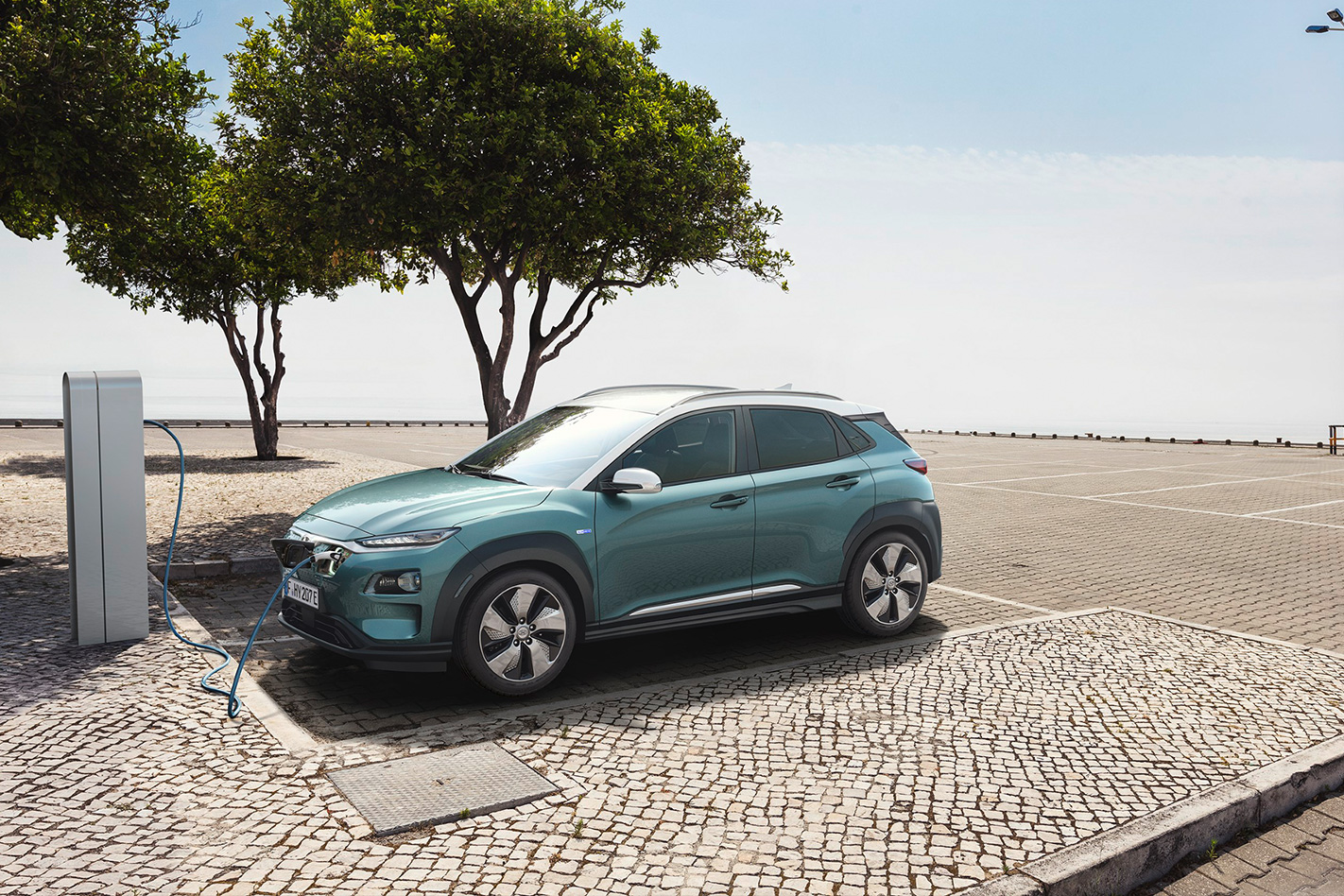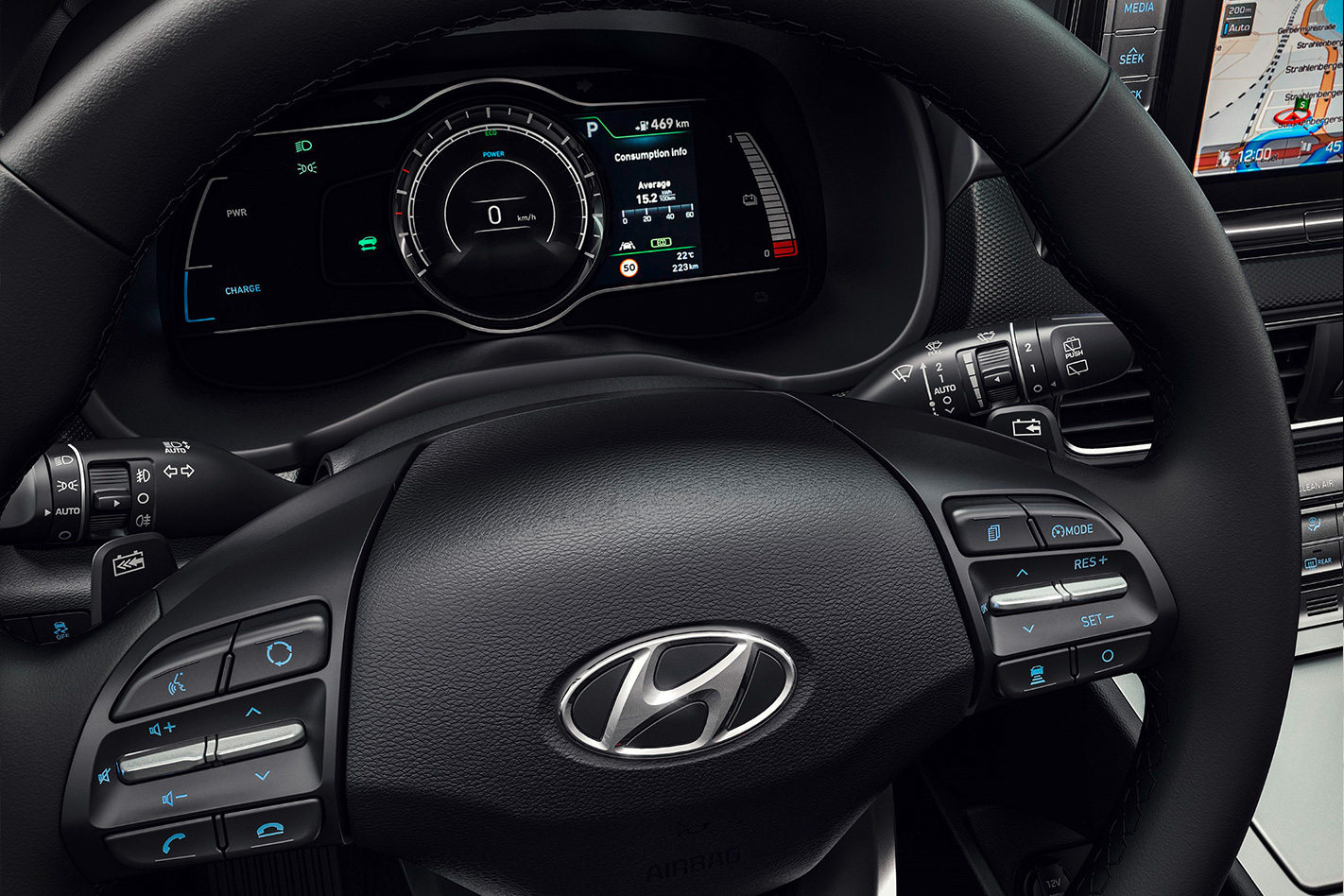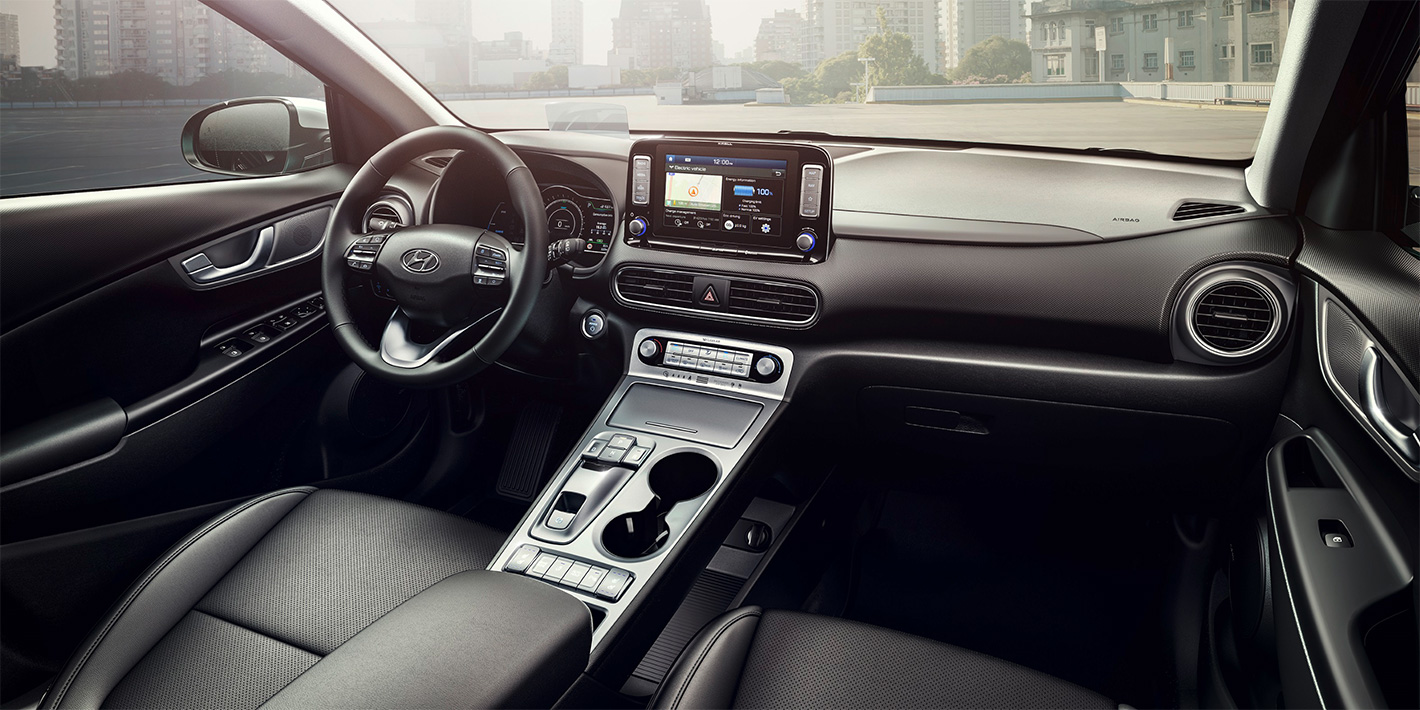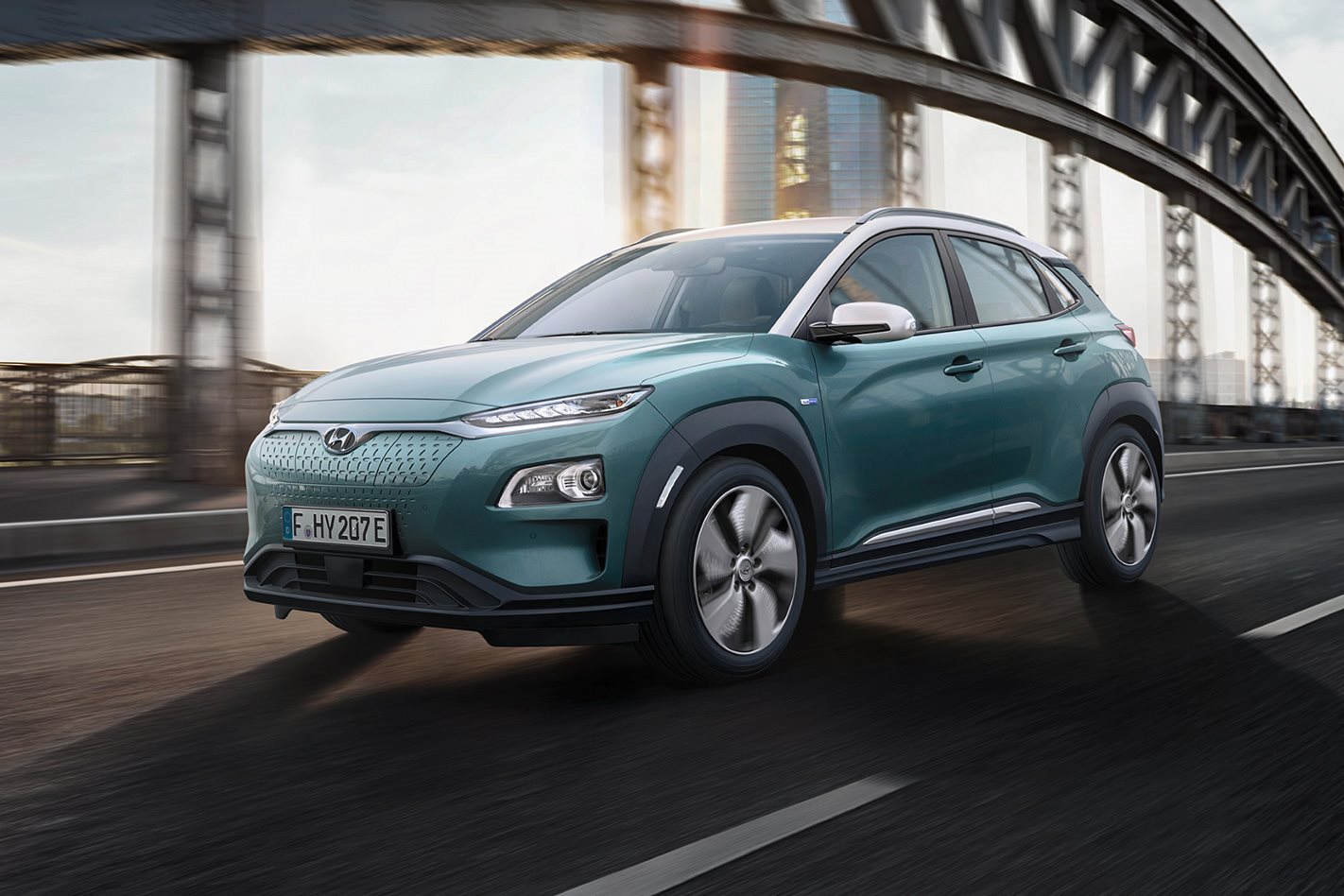HYUNDAI’S assault on the zero emissions SUV market has switched up a gear with a pair of fully-electric Kona variants added to the range, alongside the hydrogen fuel cell-powered Nexo, which made its debut in January.
The Hyundai Kona Electric will be initially offered in Europe with a choice of two powertrains starting with the basic version, which has a 39kWh lithium ion battery that sends power to a 99kW/395Nm electric motor for a range of up to 300km and zero to 100km/h acceleration in 9.3 seconds.
The second long-range variant has a beefier 64kWh battery connected to a 150kW permanent magnet motor with the same torque output as its sibling, for a range of as much as 470km and acceleration to 100km/h that takes 7.6s.

On the outside, the Kona Electric is similar in appearance to the combustion-powered versions with the exception of its grille which has been sealed over for reduced drag and improved efficiency. There’s also redesigned headlights that incorporate a ‘composite’ of LEDs.
The redesigned front end also houses the charge socket, which is exposed by flipping open a hatch hidden in the right side of the grille.

There are more changes in the cabin too with a dedicated centre console that houses the unique electric drivetrain controls.
While petrol-powered versions allow manual gear changes with the steering wheel paddles, for the Electric, the paddles allow the driver to adjust regenerative braking aggressiveness. Increasing the effect puts more energy back into the battery while decreasing re-gen allows the car to coast further when the accelerator is released.

A selection of driver assistance systems are also offered as standard with the Electric pair, includingadaptive cruise control down to stop-and-go traffic, autonomous emergency braking, lane departure warning, lane keep assistance, blind spot monitoring, rear cross traffic alert, driver fatigue monitoring and speed limit alert.

A number of ix35 Fuel Cell models arrived with their own hydrogen filling station in 2014, the successor to that model – the Nexo will also come here in limited numbers next year, and the company’s other notable electrified model – the Ioniq – will touch down mid-year.






